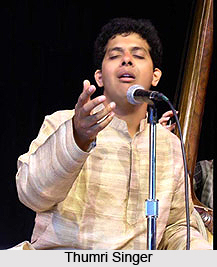
Some ragas may have just one note that tends to be accessed indirectly, others may have several. Ragas can be circuitous to different extents.

This happens because some of their notes are typically accessed through other notes or in specific note patterns. Here is a simple solfa song to demonstrate a few typical note combinations in Raag Pahadi.Ĭircuitous ragas can be identified at a glance by their undulating ascending and descending scales.

The other notes have to be incorporated into this framework with great care in order to to retain the raga's identity. The notes Sa Re Ga Pa Dha (1 2 3 5 6) form the backbone of Raag Pahadi. Pahadi (literally "of the hills") is an evening raga from the foothills of the Himalayas that combines both playful and pensive aspects. Two such ragas are Pahadi and Bhairavi, both of which can get away with using just about any note in the octave while still retaining their separate identities. Meanwhile, some ragas are performed almost exclusively as mixed ragas. You don't often hear of mixed versions of the more serious ragas, because such ragas are not usually performed in lighter settings. So you can have performances in Mishra Kafi or Mishra Des and so on. In such cases, the adjective mishra (mixed) is added to the name of the raga. But in light & semi-classical settings, they can afford to be more playful, such as by mixing in additional notes. In mainstream classical music, artists adhere to the framework of the raga quite strictly. Such constraints make a raga more challenging but also give it a stronger identity. In Raag Des, on the other hand, the note Ni (7) can only be used in ascending sequences, while the notes Ga (3) and Dha (6) and flat ni (♭7) can only be used in descending sequences. So in Raag Dhani, for instance, you would never use the note Re (2) in an ascending sequence, but you can use it in descending sequences. When the scale of a raga is asymmetric, what this means in terms of application in music is that ascending sequences in musical phrases must reflect the ascending scale while descending sequences must reflect the descending scale. In a classical setting, Raag Kafi is typically performed in the evening hours. It is a very popular raga for "hori," which are songs sung during the festival of Holi. Raag Kafi is pretty with wistful undertones and retains the rustic flavor of its folk roots. Additionally, the same variants of those notes, Sa Re ga ma Pa Dha ni (1 2 ♭3 4 5 6 ♭7), are used in both the ascending and descending scales, making it a symmetric raga. Raag Kafi uses all seven notes in both its ascending and descending scales, so it is a sampoorna raga ( sampoorna means "complete"). Kafi and Durga are examples of symmetric ragas.

Additionally, they use the same notes in both the ascending and descending scales. Symmetric ragas have the same number of notes in both the ascending and descending scales: five-five ( audav-audav), six-six ( shadav-shadav), or seven-seven ( sampoorna).

In terms of raga structure, there are symmetric, asymmetric, mixed ( mishra), circuitous ( vakra), and compound ( jod) ragas. Lively, nimble, and more suited to delicate ornamentation, these ragas are a great introduction to Hindustani (North Indian) classical music if you are new to it. This page gives you an introduction to the structures of ragas using a few light ragas as examples – Kafi, Durga, Dhani, Des, Pahadi, Bhairavi and Bahar. Ragas Classified by Structure ~A selection of light ragas~


 0 kommentar(er)
0 kommentar(er)
